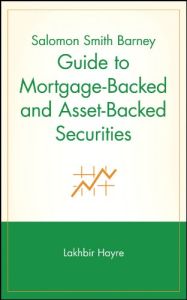Join getAbstract to access the summary!

Join getAbstract to access the summary!
Lakhbir Hayre
Salomon Smith Barney Guide To Mortgage-Backed and Asset-Backed Securities
Wiley, 2001
What's inside?
Securitization made simple. Almost.
Recommendation
Lakhbir Hayre has created a comprehensive and authoritative reference guide for the asset-backed and mortgage-backed securities markets. In compiling this book, Hayre drew on the expertise of ABS and MBS specialists from Salomon Smith Barney, which was a pioneer in the development of these markets and still trades the largest volume of the securities. This huge volume includes plenty of charts, graphs and illustrations as companions to its enormously detailed and clearly explained descriptions and analysis. getAbstract.com recommends this book as a useful reference for experts and an enlightening introduction for securitization novices.
Summary
About the Author
Lakhbir Hayre is a mortgage officer at Salomon Smith Barney and the firm’s leading expert on mortgage-backed and asset-backed securities.


















Comment on this summary